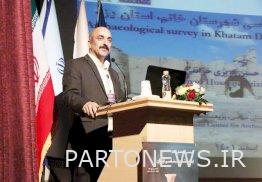220 cultural-historical artifacts were discovered and identified in Khatam Yazd/ The oldest identified artifacts date back to the Middle Paleolithic period.

According to Aria Heritage Report, citing the public relations of Cultural Heritage and Tourism Research Institute, Mohammad Hossein Azizi Kharanghi, on March 8, 1401, in the “Sixth Specialized Meeting of the 20th Annual Meeting of Iranian Archeology” said: The archaeological survey of Khatam city (central parts, Chahak and Isar) of Yazd province despite the problems and Restrictions due to the epidemic of Covid-19 were implemented in 1400.
This archaeologist added: Yazd province, despite being located in the center of Iran between different prehistoric, historical and Islamic cultures in Fars, Kerman and the Central Plateau, and despite its high archaeological potential, for various reasons, it has been less studied and investigated in terms of archeology. Very few archaeological excavations have been done in this province.
He clarified: The high cultural and historical capacities of Yazd province in the Islamic era are obvious to everyone, but the conditions of this region of the country in the historical era and especially before history are completely in an aura of ambiguity, except for the names and names of historical places that are proof of its historical roots. Very few archeological works that show the historical identity of this province have been discovered and identified, the main reason of which can be considered as the lack of attention to archeological studies, which requires the planning and desire of local and provincial officials to carry out such studies.
Azizi Kharanghi stated that Khatam city has high potentials for human settlement since prehistoric times due to its special climatic features and geographical location, adding that the connection with the two provinces of Fars and Kerman led to the formation of special lifestyles and special human cultures in the region. It is known that these characteristics have been crystallized in the archaeological evidence.
This archaeologist said: The archaeological investigation of Khatam city (central parts, Chahak and Isar) was done with the financial support of the Cultural Heritage and Tourism Research Institute to complete the archaeological map of the country, and the result of this research was the discovery and identification of 220 cultural and historical artifacts including buildings, castles, aqueducts, enclosures and … Was.
Pointing out that in terms of chronology, the oldest works identified in this area go back to the Middle Paleolithic period (40-50 thousand years ago), he said: It is the first time that works of this age have been identified in the political boundaries of Yazd province, although considering Due to the proximity of these sites, they can be considered as the continuation of the Paleolithic traditions of southwestern Zagros and Fars.
Azizi Kharanqi added: “Unfortunately, due to extensive agriculture in areas where there is a potential for the formation of prehistoric sites, and the destructions that took place after the revolution due to extensive industrial agriculture and excessive attention to pistachio cultivation in the region on a large scale, no The prehistoric site was not identified except for two pieces of pottery from this period.
This archaeologist said: According to the climatic conditions and the identified artifacts, it seems that in the historical period (Ashkan and Sassanid) with the development of aqueduct construction technology, the central areas of Iran, including the Khatam area, were inhabited, and numerous artifacts were identified from this period.
According to him, only two works of Islamic middle ages were identified in Chahek (the enclosure of Chahek and the mausoleum of Shaykh Kale Parideh), and most of the works of the Islamic period in the region are related to the Safavid period and later, and its peak was in the Qajar period.
Azizi Kharanghi, pointing out that one of the cultural characteristics of this region is the existence of numerous castles of lords and serfs in its different regions, stated: the high potential of agriculture in the region and the abundant water from numerous springs and canals have led to the formation of such works, which according to the characteristics In general, these works can be attributed to the Qajar period.
In the end, he said: Although some researches have been conducted and some of these castles have been attributed to the Afshari period (Tavanger Marosti 1394), but evidence of evidence and an indicator of this period was not identified in recent studies to assign such works to the said period.
end of message/

